·Application Fields:
■Critical mission;
■Real-time process control;
■Interconnected large networks;
■High-speed data processing of key loads;
■Expensive cost of power failure.
·Characteristics:
■Expandability: The system can be expanded at any time to meet the requirements; and it’s easy to achieve the N+1 parallel redundant operation mode;
■Reliability: Once one UPS fails, it will automatically quit working while the rest UPS will undertake all the loads to guarantee normal operation;
■Usability: Failure of one UPS doesn't affect system operation, and there is no need to shut down for maintenance, which can effectively improve the MTTF and protect the loads maximally.
·Double UPS Server Redundancy Operation Solution :
For easy analysis, we use double UPS to analyze the 1+1 parallel redundancy operation as shown in figure 1. The sum of all loads are less than 100KVA. The output voltage of two UPS connects directly with the output of distribution cabinet, then supply the power to the loads through the switch Q. If it’s a dual supply load, separate wire can be led from the distribution cabinet, meanwhile, it can satisfy the input condition of the dual supply load, as shown in the Q3, Q4.
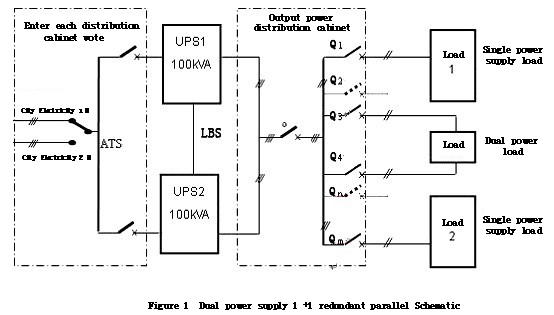
·Reliability Analysis of Power Supply of Double UPS Server:
In order to quantify the concept of reliability, we will only discuss the double UPS server itself, because essential breaker switches are the same no matter by what way the power is supplied.. Here we just discuss the differentiated parts. For simplicity, we regard the reliability rate of the two UPS are the same: r =0.99. So we can draw the dual 1+1 parallel redundant power supplying reliability model, as shown in figure 2.
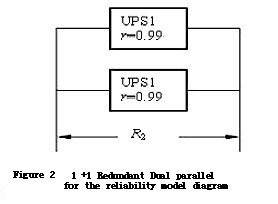
At this time, the reliability of power supplying system is R2:

Unreliability rate Q = 1 – reliability rate = 1-0.9999 = 0.0001. So the unreliability rate is one in ten thousand, which means failure rate is also about one in ten thousand. The double UPS server system decreased the unreliability rate of the system by 100 times. Because that it can decrease the MTTR (Mean Time To Repair) to the minimum in the usability expression.
· Basic Operation Principle of UPS Parallel Redundancy System:
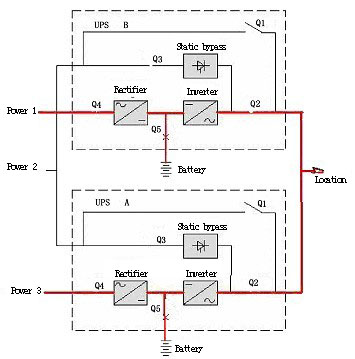
UPS Maintenance Online:
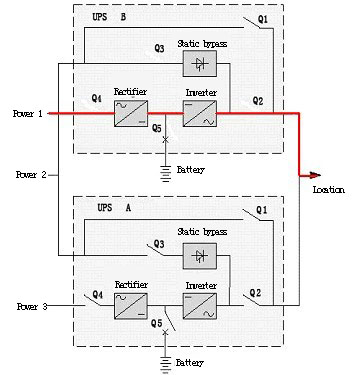
When one of the UPS failed (for example UPS-A), it will automatically quit working and the rest will operate with 100% loads. For the broken UPS, we can switch off Q1, Q2, Q3, Q4, Q5 etc. to separate it for maintenance. Then put it into operation again after the maintenance, as described above. Even if the UPS doesn’t break down, you can also can use this method for internal maintenance, such as cleaning the dust, fastening couplings, testing or replacing batteries etc.
·UPS Parallel Redundancy Solution Diagrams:
Operation diagram:
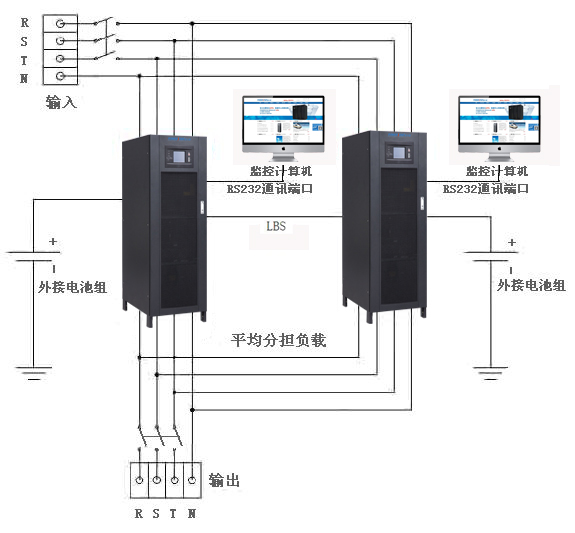
Power supply schematic diagram:
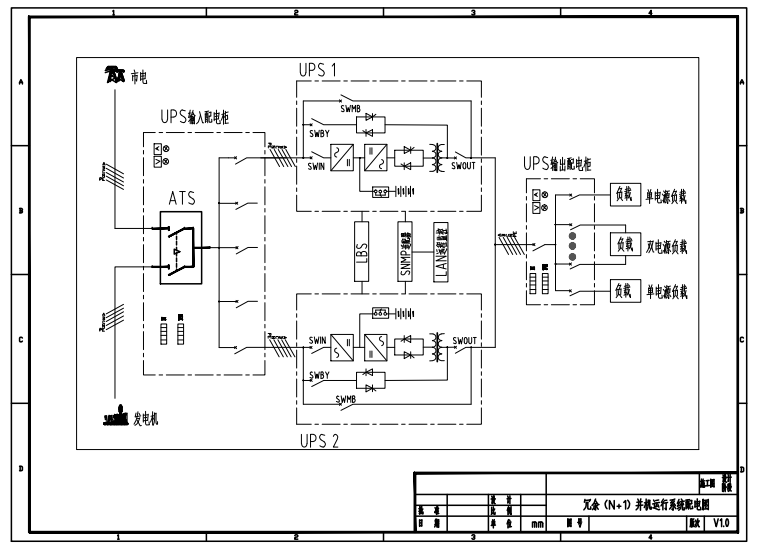







 Copyright © 2003 - 2023 . All Rights Reserved
Copyright © 2003 - 2023 . All Rights Reserved